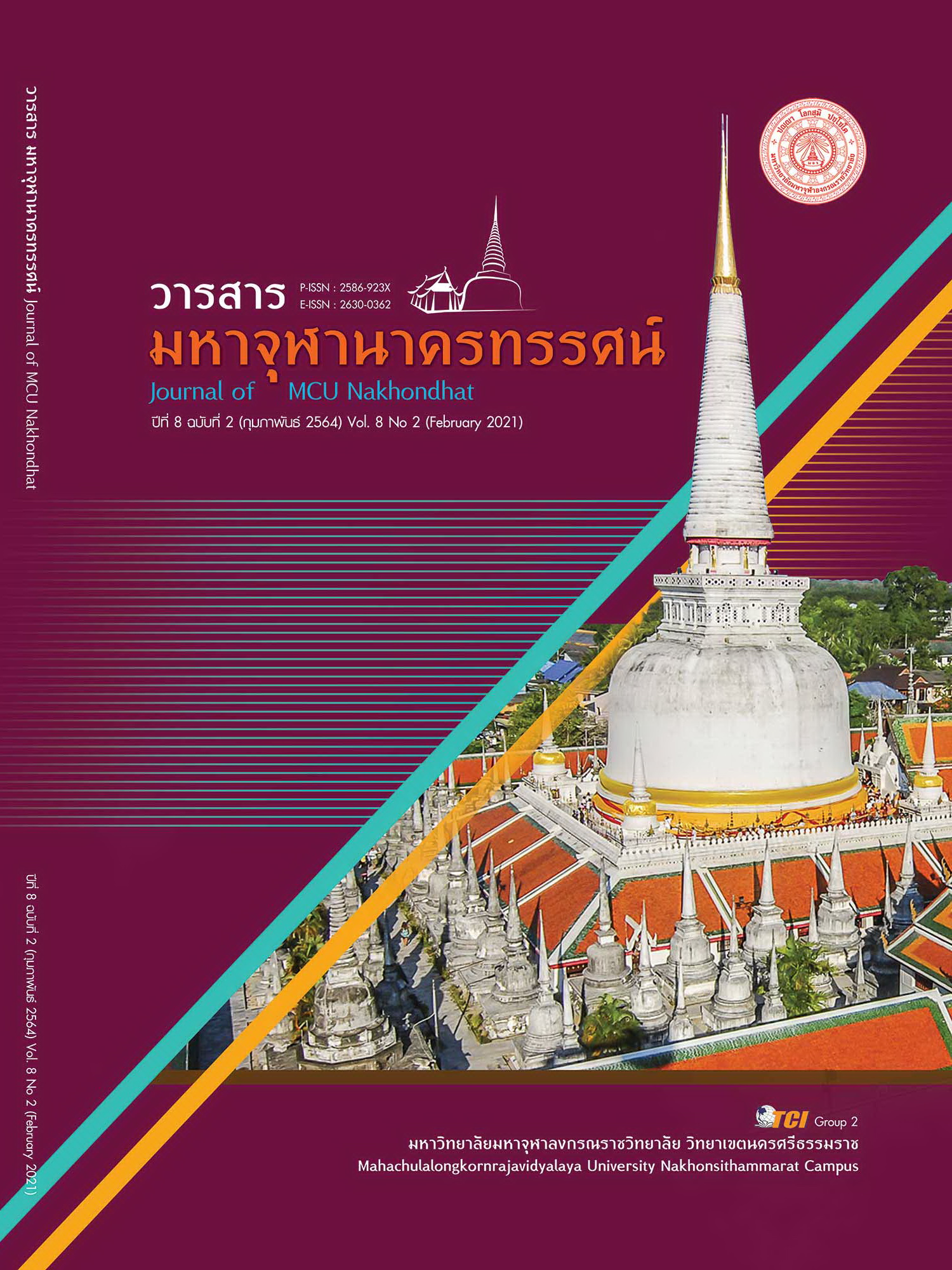A STUDY OF THE RESULTS OF MATHEMATICS LEARNING ACTIVITIES ON THE TOPIC OF THE INTRODUCTION TO DATA ANALYSIS USING INQUIRY METHOD (5E) WITH CONCEPT MAPPING TECHNIQUE FOR MATHAYOMSUKSA 5 STUDENTS
Main Article Content
Abstract
The objectives of this article were to: 1) develop of lesson plan on the topic of the introduction to Data Analysis by using inquiry method (5E) with the concept mapping technique to be efficient 75/75 2) study the effectiveness index (E.I.) of lesson plan 3) compare the student’s learning achievement before and after learning Mathematics on the Topic of the introduction to data analysis by using inquiry method (5E) with the concept mapping technique and 4) study the satisfaction of students. The samples were 30 students in Mathayomsuksa 5/8 at Banphai School, KhonKaen Province, obtained by cluster sampling. The research instruments were 1) lesson plans of Inquiry Method (5E) with Concept Mapping Technique 2) the multiple choice achievement test and 3) the students’ satisfaction questionnaire. The data analysis was mean, percentage, standard deviation, t - test dependent and content analysis. The result were as follows: 1) The lesson plans on the topic of the introduction to Data Analysis using inquiry method (5E) with the concept mapping technique of students in Mathayomsuksa 5 was at 76.87/76.33 2) The effectiveness index was 0.5026 or 50.26 percent. 3) Learners who studied using inquiry method (5E) with the concept mapping technique had post - study score significantly higher than the pre - study score at .05 level. And 4) The students’ satisfaction towards learning activities was at a high level.
Article Details
References
เชิดศักดิ์ โฆวาสินธุ์. (2549). การวิจัยทางการศึกษา. กรุงเทพมหานคร: โอเดียนสโตร์.
เผชิญ กิจระการ และสมนึก ภัททิยธนี. (2545). ดัชนีประสิทธิผล (EFFECTIVENESS INDEX: E.I). วารสารวัดผลการศึกษามหาวิทยาลัยมหาสารคาม, 8(2), 31-36.
โรงเรียนบ้านไผ่. (2558). รายงานสรุปผลสัมฤทธิ์ทางการเรียนโรงเรียนบ้านไผ่ ประจำปีการศึกษา 2557. ขอนแก่น: โรงเรียนบ้านไผ่.
วิมลรัตน์ สุนทรโรจน์. (2545). เอกสารประกอบการเรียนการสอนวิชาพัฒนาการเรียนการสอน. (พิมพ์ครั้งที่ 3). มหาสารคาม: ภาควิชาหลักสูตรและการสอน คณะศึกษาศาสตร์ มหาวิทยาลัยมหาสารคาม.
. (2549). นวัตกรรมเพื่อการเรียนรู้. มหาสารคาม: ภาควิชาหลักสูตรและการสอนคณะศึกษาศาสตร์ มหาวิทยาลัยมหาสารคาม.
สถาบันทดสอบทางการศึกษาแห่งชาติ (องค์การมหาชน). (2558). รายงานผลการประเมินการทดสอบระดับชาติขั้นพื้นฐาน O - NET. เรียกใช้เมื่อ 8 กันยายน 2558 จาก www.niets.or.th.
สถาบันส่งเสริมการสอนวิทยาศาสตร์และเทคโนโลยี. (2544). คู่มือการจัดการเรียนรู้ กลุ่มสาระการเรียนรู้คณิตศาสตร์. กรุงเทพมหานคร: องค์การรับส่งสินค้าและพัสดุภัณฑ์.
. (2546). การจัดสาระการเรียนรู้ กลุ่มวิทยาศาสตร์ หลักสูตรการศึกษาขั้นพื้นฐาน. กรุงเทพมหานคร: สถาบันส่งเสริมการสอนวิทยาศาสตร์ และเทคโนโลยี.
สุวิทย์ มูลคำ. (2551). การเขียนแผนการจัดการเรียนรู้ที่เน้นการคิด. (พิมพ์ครั้งที่ 3). กรุงเทพมหานคร: อี เค บุ๊ค.
สุวิทย์ มูลคำ และ อรทัย มูลคำ. (2547). 21 วิธีจัดการเรียนรู้: เพื่อพัฒนากระบวนการคิด. (พิมพ์ครั้งที่ 5). กรุงเทพมหานคร: ภาพพิมพ์.
Buzan, T. (1991). Use both sides of your Brain. New York: Penquin Group.


